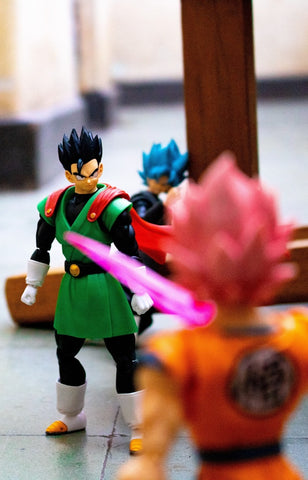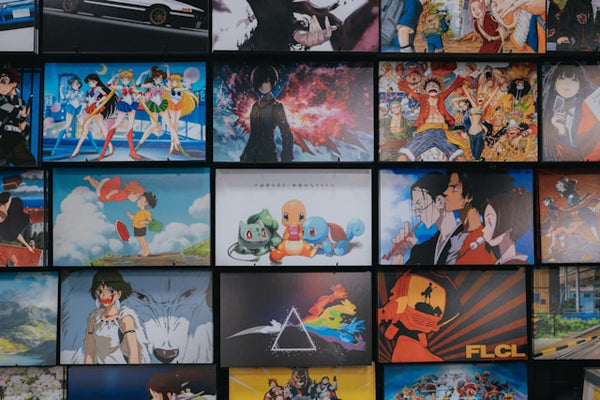
The History Of Anime
In the West, anime is a term short for ‘animation’ and is used to describe any type of animated works made in Japan. However, the Japanese definition of anime includes any kind of animation, even if it’s made outside of Japan. How is it that Japanese animation became so special and iconic that the rest of the world decided to distinguish it from others? The answer to that is hard to pin down and there might not be just one reason.
The history of anime in Japan goes back further than one might think. It’s further than the iconic Astro Boy of 1960s, and even earlier than when it was common for televisions to be in people's home, and even before World War II. Japanese anime’s roots can be found going all the way back to the early 1900s.
The 1970-1980’s
In the 1970-1980s, anime became mainstream in Japan, experiencing a boom in production with the rise in popularity of anime like Captain Harlock, Gundam, Macross, Dragon Ball, and genres such as real robot, space opera and cyberpunk. Space Battleship Yamato and Super Dimension Fortress Macross also achieved worldwide success after being adapted respectively as Star Blazers and Robotech. Around this time, especially in the U.S. anime exploded in popularity becoming mainstream through scholars in media studies, cultural studies, sociology and anthropology.
This popularity was also embraced in Europe, where France and Belgum enjoyed anime in the 1970-1980’s, which also showed here in Quebec. Many kids who grew up in those decades in Quebec remember our early introduction to anime via Albator, Golderak, Lady Oscar, Maya L’Abeille, Remi, and others!

Photo by Diego Isaac Gonzales Tejada on Unsplash
In 1988, the film Akira went on to become an international success one of the earlier popular anime movies in North America. Later, in 2004, the same creators produced Steamboy, which became the most expensive anime film. Spirited Away shared the first prize at the 2002 Berlin Film Festival and won the 2003 Academy Award for Best Animated Feature, while Innocence: Ghost in the Shell was featured at the 2004 Cannes Film Festival.
The 1990’s
It’s impossible to catalogue the numerous series and films that made their way overseas in the 1990s. Anime was a fertile market for American distributors whose only production costs involved re-recording/rewriting dialogue as well as editing content and timing. Many television stations like the Sci-Fi Channel and Cartoon Network would run anime shows in specialized blocks aimed at older children and teenagers. Of these, Cartoon Network’s Toonami was the most influential in bringing several action-oriented anime shows to the widest possible audience.
The 1990s also provided Americans with their biggest anime cultural effects. Shows like Sailor Moon, Dragon Ball Z, and Gundam Wing were not only big hits in Japan but in America as well. The influx of other elements of Japanese pop culture began to take hold. The largest of these was Pokémon which was not only an anime series but also featured a video game and card game component.

Photo by Dex Ezekiel on Unsplash
In the realm of film, anime was breaching into the mainstream like never before. While movies like Ghost in the Shell remained beloved by anime fans, it also went on the be a huge inspiration for The Matrix, one of the highest-grossing films of the 1990s. Miyazaki’s films began to be even more widely accepted, with Princess Mononoke becoming the most expensive animated production ever made at the time.
All the while you had distributors like Pioneer, Funimation, and Manga Video constantly putting out content that showcased the diversity of anime. The most striking of these was Neon Genesis Evangelion which shattered Western expectations for the mecha genre. To this day, many fans cite Neon Genesis Evangelion or Cowboy Bebop as the anime that made them grow up and realize that these cartoons weren’t just for kids. And the fandom keeps growing!
There have been some bombs when companies like DIC & 4 Kids TV tried jumping in to cash in on the craze, and though some things like Pokemon translated well, others like their translation of One Piece(shudder) bombed hard with fans and were dropped. These companies soon learned the fans wanted good translations, not quick grabs!
And today, anime is a multi-million dollar industry that shows no sign of stopping. There are streaming services that cater specifically to anime shows and releases from Japan. Fan conventions are full of cosplayers dressing up as their favourite anime characters. And the mainstream acceptance of the medium is at an all-time high.
All in all, Anime is here to stay, and we love it!
